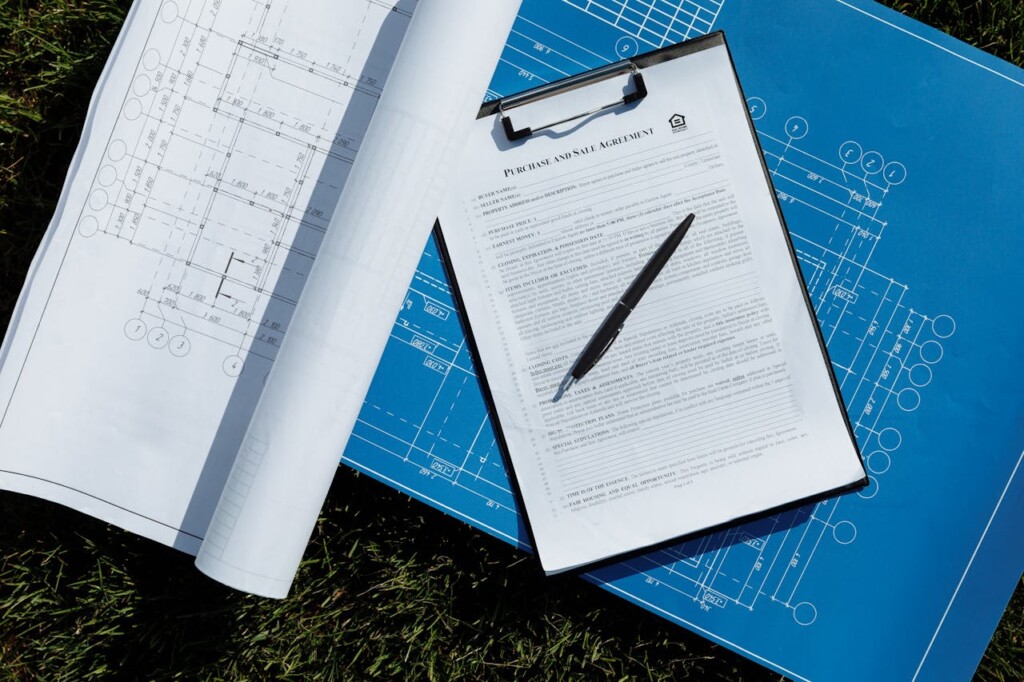A certificate of occupancy signals the official completion of a construction project in Sugar Land. The commercial certificate of occupancy checklist Sugar Land teams rely on verifies that buildings and sites satisfy all safety, code, and permitting requirements before anyone can occupy the space.
This process demands coordination across multiple disciplines including building systems, fire/life safety measures, site development requirements, and stormwater clearance. The Sugar Land Development Code establishes the framework for these comprehensive checks that ensure both life safety and regulatory compliance before final occupancy.
Which Permits And Clearances Are Required Before Sugar Land Issues A CO?

Sugar Land requires several permits and clearances to be secured before issuing a certificate of occupancy. We coordinate these requirements early in the project timeline to prevent delays at the finish line. The city mandates specific documentation across stormwater, construction-phase activities, and trade disciplines.
Post Construction Stormwater Quality Permit
This permit represents the most critical clearance requirement from the Stormwater Department. Projects meeting Sugar Land’s definitions of “new development” or “redevelopment” under Section 11-7 of the City Code of Ordinances must obtain this permit to receive CO clearance. The permit remains active for the life of the site and requires annual renewal.
We ensure this permit is secured well before occupancy since it directly gates the CO process. The Post Construction Stormwater Quality Permit cannot be bypassed or deferred, making early coordination with the Stormwater Department essential for project success.
Construction-Phase Environmental Permits
Projects disturbing one acre or more of land must comply with both federal and state construction stormwater regulations. The Texas Commission on Environmental Quality (TCEQ) and Environmental Protection Agency (EPA) require applicable sites to obtain coverage under the Texas Pollutant Discharge Elimination System (TPDES) Construction General Permit.
Additionally, the city requires a Land Disturbance Permit for any construction activity impacting one acre or more. This requirement extends to smaller disturbances that form part of a larger common plan of development totaling one or more acres. We coordinate these permits during the early construction phases to maintain compliance throughout the build process.
Trade And Life-Safety Permits
All trade disciplines must receive final permit approvals before CO issuance. Building, electrical, plumbing, mechanical, and fire system permits require completion and final inspection approval. Each discipline follows specific timelines outlined in Sugar Land’s Development Code.
We track permit expiration dates carefully since certain trade permits expire if work does not commence within 180 days of issuance. This timing requirement can create schedule pressure if permits are obtained too early or if construction progress stalls. Our teams coordinate permit applications with actual construction sequencing to avoid expiration issues that could delay occupancy.
What Inspections And Documents Are Typically Verified For A Commercial CO?
Sugar Land requires verification across multiple systems and disciplines before issuing a certificate of occupancy. We coordinate these checks systematically to confirm the building meets all safety and code requirements for occupancy.
Building Final Inspection Requirements
The building final inspection confirms conformance to approved plans and specifications. We verify that foundation, framing, and finish inspections have received approval from the building department. The site address must be posted and clearly visible from the street, and the construction site must be kept safe and sanitary throughout the final inspection process.
Building inspectors confirm that all work matches the approved construction documents. Any deviations from the original plans require documentation and approval through the proper channels before the final inspection can pass.
Trade System Finals
All electrical, plumbing, and mechanical systems must pass their respective final inspections before CO issuance. Each trade discipline undergoes separate final inspections to verify installation quality and code compliance. The electrical final covers all wiring, fixtures, and panel installations. Plumbing finals address water supply, drainage, and fixture connections. Mechanical systems include HVAC installations and ductwork approval.
These trade finals must align with the building final timeline to avoid delays. We schedule these inspections strategically so all systems receive approval before the certificate of occupancy review.
Fire Protection And Life Safety Systems
Fire alarm and fire extinguishing systems require acceptance tests before occupancy approval. These tests confirm that detection systems respond correctly and that suppression systems operate within design parameters. Portable fire extinguishers must be installed and properly located according to the approved fire protection plan.
Emergency lighting and exit signage must be functional and tested during the inspection process. Emergency egress paths require verification that they remain clear and unobstructed. Occupant load planning and posting confirms that the building can safely accommodate the intended number of people.
Accessibility Compliance
Accessibility features must be installed per the approved plans and meet ADA requirements. Inspectors verify that ramps, doorways, restroom facilities, and parking spaces conform to accessibility standards. These features require documentation that demonstrates compliance with both local and federal accessibility guidelines.
The accessibility inspection covers both interior and exterior elements of the project. Any modifications to accessibility features during construction require approval before the final inspection.
Site And Development Verification
Site inspection confirms that development work conforms to the approved site plan and development agreement conditions. Landscape maintenance bonds may be required for certain projects to ensure ongoing landscape compliance. County or agency approvals and stamps must be obtained where noted on the specific project checklist.
Site conditions include parking lot completion, stormwater management installation, and utility connections. The site inspection verifies that external work aligns with the approved development standards and city requirements.
How Do Sugar Land’s Development Code And Traffic Requirements Affect CO Timing?

Sugar Land’s Development Code grants the city authority to require technical studies during the development review process when projects could impact the transportation network. Projects that generate approximately 100 trips during peak hours, 1,000 trips per day, or involve 100 acres or more typically trigger the need for a traffic impact analysis. The city also requires these studies for planned developments, zoning requests, and conditional use permits where traffic impacts are anticipated.
When a traffic impact analysis identifies that a project will negatively affect road network performance, the developer must implement mitigation measures before occupancy. These measures ensure that intersections and roadway segments maintain minimum Levels of Service standards as defined by the city’s transportation planning criteria. Mitigation can involve constructing turn lanes, installing traffic signals, making right-of-way dedications, or providing payment in lieu of physical improvements.
The coordination required for traffic queuing analysis and Level of Service mitigation can extend project timelines significantly. We coordinate these studies early in the development process because the findings directly influence site design, construction sequencing, and occupancy scheduling. Projects that fail to address identified traffic impacts cannot receive certificate of occupancy approval, regardless of building completion status.
Sugar Land’s Development Code also includes provisions for vested rights and permit expiration that affect CO timing. When construction progress lapses or stops for extended periods, permits can expire under the city’s rules. The code specifies that certain trade permits expire if work is not initiated within 180 days of issuance. Projects experiencing delays must request extensions or reapply for expired permits, which can push back completion dates and certificate of occupancy issuance.
Permit expiration becomes particularly problematic when combined with traffic impact obligations. If a project’s permits lapse while waiting for traffic improvements to be completed by other parties or the city, the entire development timeline can be compromised. This creates a coordination challenge where we must balance construction scheduling with external infrastructure delivery and maintain permit validity throughout the process.
What Practical Steps Help A Commercial Project Pass CO In Sugar Land?
When we approach a commercial project’s final phase, success depends on methodical execution of specific requirements. These steps represent the difference between receiving a Certificate of Occupancy and facing costly delays that could push back tenant move-ins.
Trade Finals And Documentation Verification
We begin by confirming all trade finals have passed inspection and align with approved plans. Building, electrical, plumbing, and mechanical systems must demonstrate conformance to the original specifications submitted during the permit application process.
Each discipline requires a final inspection where inspectors verify completed work matches the approved drawings. We maintain these drawings on-site throughout construction and ensure they remain accessible during all inspection visits.
Fire And Life Safety System Testing
Fire alarm and fire extinguishing system acceptance tests require careful scheduling and coordination. These acceptance tests verify system functionality under actual operating conditions rather than basic connectivity checks.
Emergency lighting and exit signage must be operational and compliant with code requirements. We test these systems to confirm proper illumination levels and clear visibility during emergency conditions.
Occupant load calculations must be posted conspicuously, and we maintain clear egress paths throughout the construction completion process. These requirements tie directly to life safety codes that protect future building occupants.
Site Work And Development Conditions
Site conformance inspections verify that external work meets development standards outlined in the original site plan. We complete all landscaping, parking, and infrastructure requirements before scheduling this inspection.
Any required landscape maintenance bonds or agency stamps must be prepared according to the specific checklist requirements. These financial instruments ensure long-term site maintenance compliance.
Stormwater Quality Permit And Clearance
The Post Construction Stormwater Quality Permit represents a critical milestone that many projects overlook until late in the schedule. This permit requires CO clearance from the Stormwater Department and becomes a lifetime requirement for the site with annual renewal obligations.
We coordinate stormwater system inspections early in the final phase since these clearances can become bottlenecks if deficiencies are discovered. The permit applies to projects meeting new development or redevelopment definitions under Sugar Land’s code requirements.
Permit Timeline Management
We verify that no key permits have expired during the construction process. Sugar Land’s Development Code includes specific expiration timelines, and certain trade permits can lapse if work stalls for extended periods.
When permit timelines become compressed, we address renewal requirements or request allowable extensions per the Code provisions. This proactive approach prevents last-minute delays that could jeopardize occupancy schedules.
Throughout final inspections, we maintain clean, safe job sites that meet the city’s sanitary and debris management standards. These site conditions reflect our professionalism and facilitate efficient inspector access to completed work areas.
Conclusion And Next Steps

Reaching certificate of occupancy represents the successful culmination of months of planning, construction, and coordination across multiple disciplines. We approach each Sugar Land project knowing that the CO clearance process requires early attention to critical elements that determine project completion timing.
The Sugar Land CO process demands proactive management of stormwater clearance requirements, particularly the Post Construction Stormwater Quality Permit that must be secured before occupancy. Final inspections across all trade disciplines need completion and approval, while fire and life safety systems require thorough acceptance testing to meet city standards. Site conditions must align with approved development plans, and any permit timeline issues need resolution to prevent last-minute delays.
Ready to navigate Sugar Land’s CO requirements for your next commercial project? Contact EB3 Construction for experienced guidance through the certificate of occupancy process.




